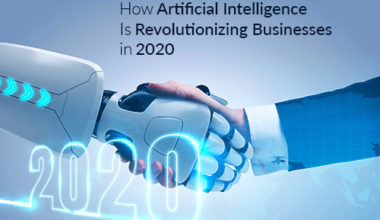Michelle Li is director of the Masters of Business Analytics Program at MIT, from the MIT Sloan School of Management, with support from the MIT Operations Research Center, now in its second year. In this position, she is responsible for building the program, designing curriculum, hiring faculty, assessing admissions criteria for students and helping students to secure future careers. She took a few minutes recently to speak with AI Trends about education for AI.
Q. Does AI education live in computer science?
Michelle: AI lives at the intersection of math and computer science, so it can be either the math major or computer science major. MIT’s Operations Research Center combines math and science.
Q. What is the AI exposure for engineering students?
Michelle: Engineering is a very broad field. If a student is strong in linear algebra and calculus, that also qualifies them to do artificial intelligence. Some engineering degree programs that are a little light on math that may not qualify.
Q. If a college today is offering engineering without AI, is it out of touch?
Michelle: No. AI is a branding of something that’s been around for many years. As long as they have higher level math courses, they should be okay. I do recommend colleges incorporate some kind of AI coursework into their programs. We have launched for example at MIT, a new machine learning course in response to demand from students.
Q.If someone is interested in pursuing a career in AI, what education is needed?
Michelle: There are different levels of work in AI. For complex modeling and algorithmic work, using predictive analytics, I recommend courses such as Statistical Methods of Machine Learning. That is a requirement if you want to do deep dive analytics. But if you want to work in AI at the business level, as an analyst or operations manager, then that kind of deep dive is not necessarily required.
There are many routes in AI. Students can be doing visualization or data engineering, for example. AI involves extracting the data from a database or designing the database in the first place, making sense of the data, then running complex models and algorithms to use the data to forecast trends. Those can be related to self-driving cars, healthcare needs – it really just depends on where the students see themselves in the future.
Q, When might certificate programs such as Udacity be appropriate?
Michelle: Udacity has courses to teach Python, R, machine learning – so I do think there is a lot of value for students to take courses online. MIT has an online course in analytics called Analytics Edge. However, online learning is very lonely. Students I meet have a general need to ask questions and solve problems in group settings. It’s hard to problem-solve complex coding challenges by yourself. Our philosophy at MIT is we like our students to be on campus full time.
We are looking into online hybrid learning, such as the Analytics Edge course, for high-achieving [undergraduate] students, to invite them on campus for a pre-admission round [to the graduate school].
Q. How many AI workers can MIT produce per year?
Michelle: The Analytics Master’s Degree program will grow to 60 students next year. We have a two-year MBA program offering an analytics certificate, with 400 students in a class. The computer science AI lab has 400 research scientists with PhDs and advanced degrees, all studying AI. The undergraduate population in computer science and electrical engineering, Core 6, is the largest number of students at MIT, about 6,000.
Q. We have private companies setting up partnerships with institutions like MIT. NVIDIA this week announced a big Deep Learning Institute partner expansion. What is your impression of this approach to educations an AI workforce?
Michelle: I think it’s great companies are stepping up and trying to train workers to do work shifting to AI. We do a lot of partnerships with companies. IN our Capstone Project, students work with companies on real-life data science projects. We are working with 15 companies this year; when we go to 60 students, we will work with 30 companies.
Q. What is the most lucrative field in AI?
Michelle: Machine learning and the using deep learning techniques, are the most lucrative positions for students with undergraduate degrees. The average salaries for MIT graduates going into AI range between $60K and $80K. For graduates of the one-year masters program, salaries are averaging $90K to $110K. It’s quite a jump for a one-year program.
I have seen salaries in the six figures for undergraduate students going into AI fields. These salaries are growing quickly because of high demand. It’s also about geography. In San Francisco, the salaries are $20K to $30K higher, and often include equity and options.
Q. Is it easier for a student to get into your graduate program than your undergrad program?
Michelle: Our graduate program is more selective than the undergraduate program. Our average graduate student has a 3.9 grade point average out of 4.0. For our graduate school focused on machine learning or AI, students need computer science and math background. Our admission rate is less than 3%, so one in 30 or 40 is admitted.
Q. What’s a good starting point for students interested in starting out in a career in AI?
Michelle: For high school students, try to go into STEM courses, depending on interest. They should try to target what industry they are interested in; AI is in every industry for instance. You cannot really try to understand every single domain. It’s better to focus on the industry of your choice. It could be cars, software, computer science or math, which applies to many fields. But definitely get some computer science skills.
I am astonished that some undergrads go through a program without any computer science. It’s a basic class everyone should take. Scripting syntax, or what object-oriented coding is, understanding the logical parts within a computer is very valuable.
Q. How do the business partnerships MIT enters into benefit everyone interested in AI research?
Michelle. Our partnerships are purely educational, not to benefit one party specifically. Our students work on projects using the company’s data and companies are generous. They need to be willing to let go of private data they have collected and share it with MIT. That’s valuable to society. So professors are getting access to information they would not have had otherwise.
Also students speak at our conferences on what they are doing with companies, such as BMW and IBM. Our faculty director worked with the Boston Public Schools to optimize daily school bus routes, saving between $5 and $10 million. So we have valuable data sharing going on.
Q. Do you have anything to add or emphasize?
Michelle: Learn some computer science and some math. Even if you are going to be an English major or a musician, learn some computer science.
This content originally posted on AI Trends.
Source: AI Trends






